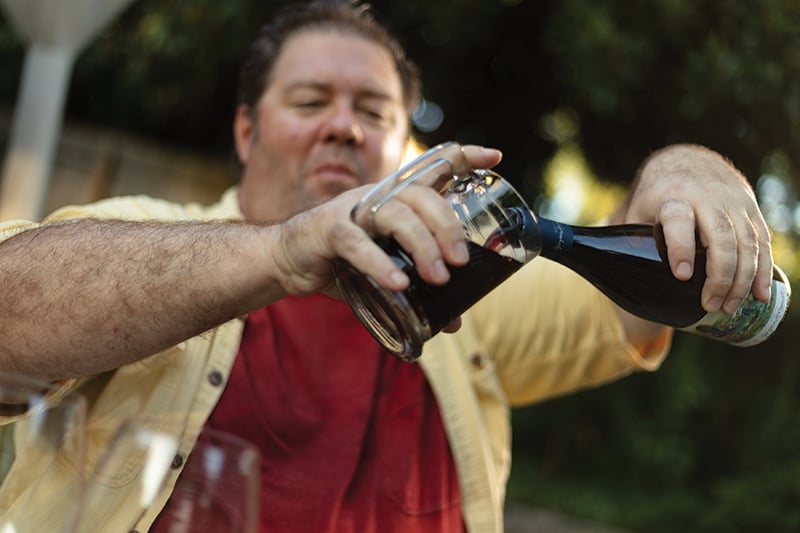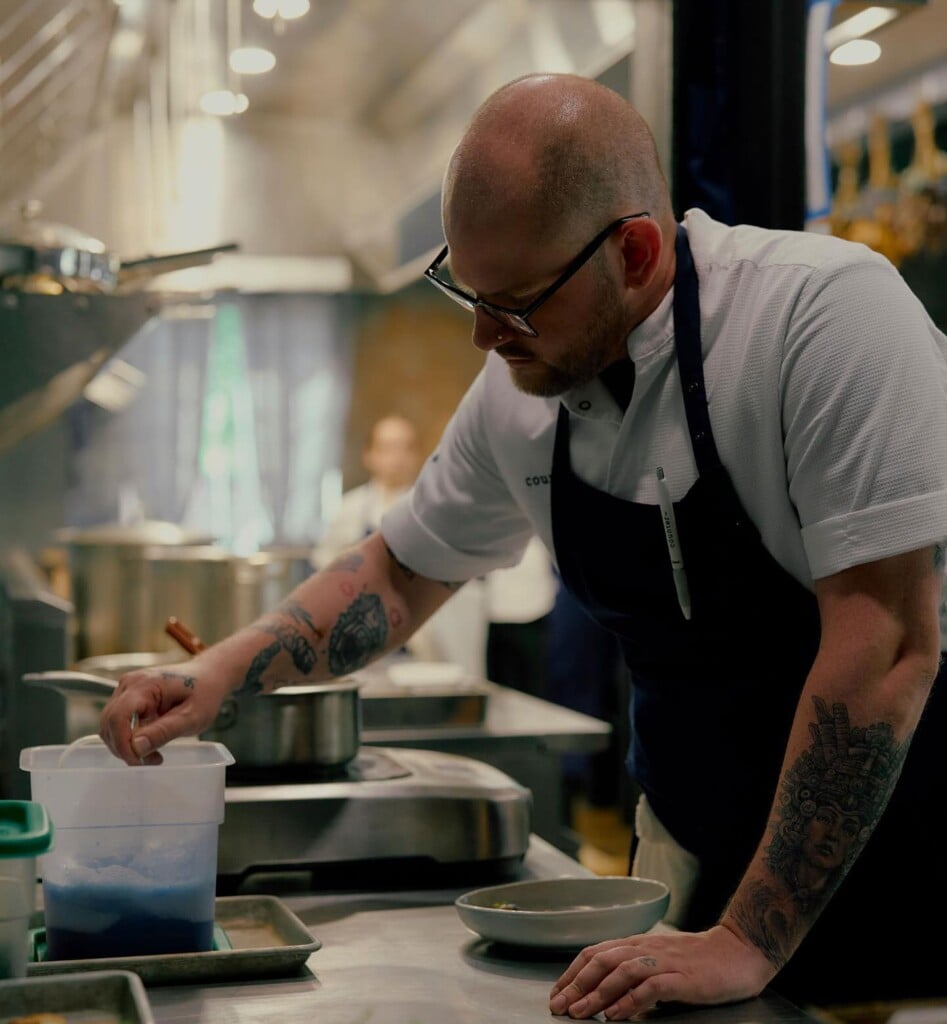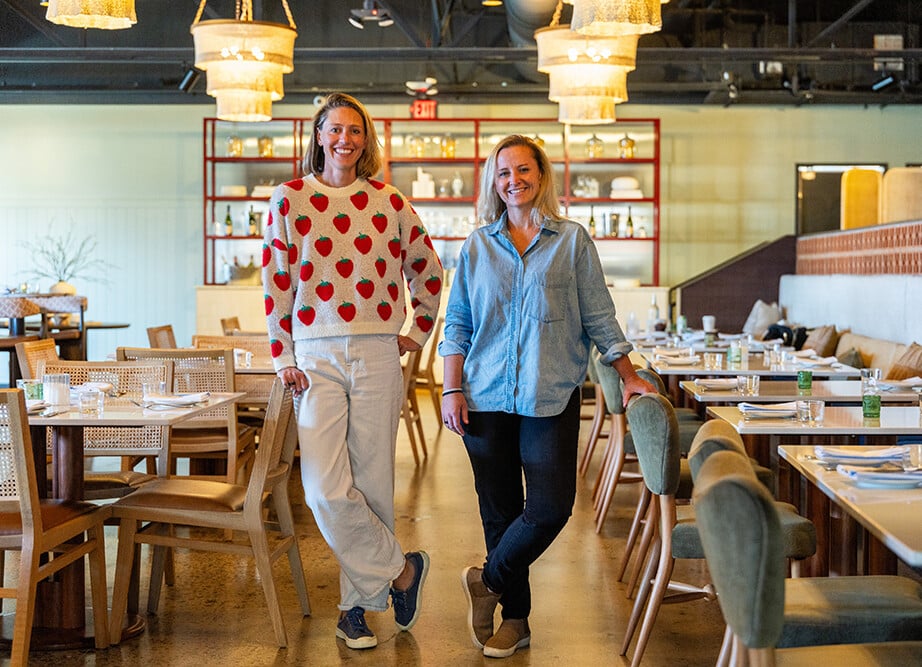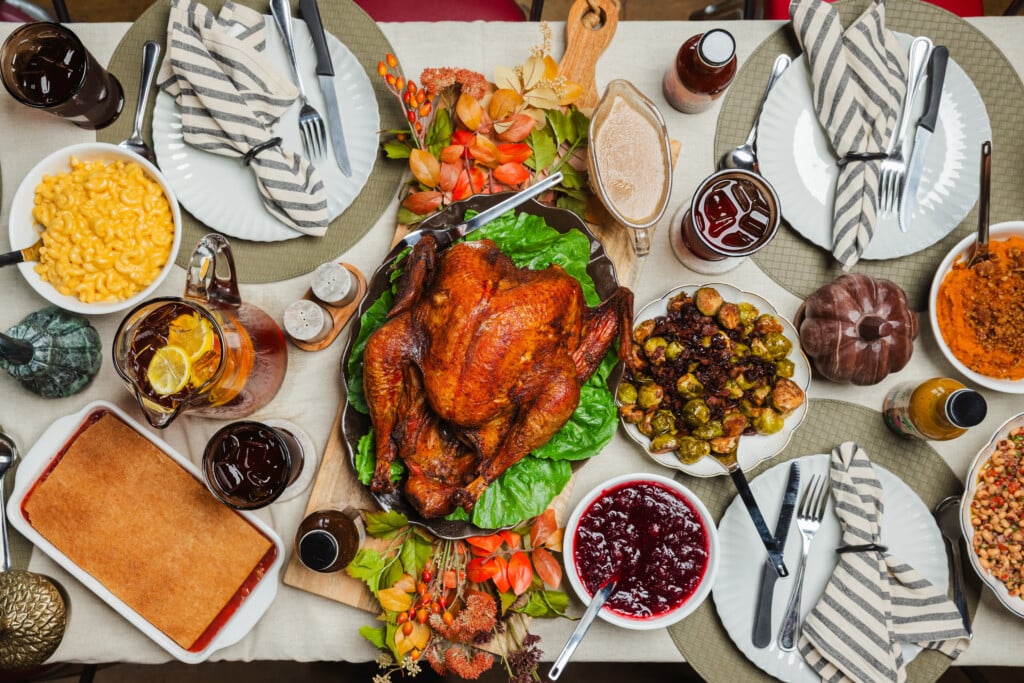What Happens When A Devoted Beer Drinker is Subjected to a Wine Tasting?
An oenophile seeks sweet revenge

I take my seat. The bottles and glasses are arrayed before me. I am prepared to detect hints. That’s what wine tasting is all about, right, “detecting hints”? As in, “I detect hints of melon, black currant, pepper, and dark chocolate,” or baking soda, or jojoba oil, or whatever else?
You, the reader, may detect a hint that I’m not exactly in my milieu. I am a beer person, always have been. Charlotte’s Big Beer Bang has been a flowing tap of joy—and hangovers, and weight gain—for me. For the June 2022 Nightlife Issue, I asked our lifestyle editor, Taylor Bowler, an oenophile who spent her formative years a cork’s throw from California wine country, to sample Charlotte beers and write about it. I thought that’d be funny, and it was, damn it.
The joke took 17 months to ricochet back toward me. This is our Wine Issue. I do not know jack about wine. Taylor has consulted sommelier Quinn Kielbasa—yes, the man has the same name as Polish sausage, an encouraging sign—of the Dilworth wine shop Mere’s to curate a diverse lineup for my beer-drinker’s sorry, sudsy palate. Our colleagues have gathered in Taylor’s backyard to watch me sip liquids about which I know nothing, and also to laugh at me.
This is Taylor’s revenge, and revenge is sweet, with hints of orange zest, almonds, and prosciutto.
1.Cruse Wine Co. Tradition Sparkling 2019 Base
Good God, this is tart. I like tart generally, but damn. This is sour beer-tart. I take another sip as my colleagues argue about something called “the four S’s.” No idea what they’re talking about. My palate adjusts somewhat as I sip, but it’s still pucker fuel. Too much.
I consult the program Taylor has prepared, Quinn’s “this is what it’s supposed to taste like” sheet. This California sparkling is a blend of 73% chardonnay and 27% pinot noir, “Earthy with dried fruit and brioche, refreshing acidity to cut through the rich texture.” This refreshing acidity could cut through a cinder block. Next.
2. 2022 Tegernseerhof Grüner Veltliner Dürnstein Federspiel
The name alone makes me think of the Habsburg dynasty, which fits—it’s from a vineyard in Austria. It’s a spectacularly Germanic name for a profoundly unremarkable wine. Subtle and delicate, I think initially, before I correct to boring. The description refers to “tropical fruit notes and lime zest,” but to me, it tastes like … not much of anything. My colleagues, having determined that the four S’s are “see, swirl, smell, and sip,” coach me on proper swirling technique, then on how to keep my hand from warming the wine in the glass. “You have to hold it by the stem!” I’m getting annoyed.
3. 2022 Hild RoseMarie Spätburgunder Rosé
Another wein, a German rosé. I can’t recall the last rosé I tried—there’s an outside chance I never have—but so far, this is my favorite of the evening. “Refreshing, bright, strawberry lemonade, salty,” say the notes. “Balanced,” say I: Rosés can be overly sweet, I hear, but this is neither too sweet nor too tart, too light nor too heavy. My annoyance has subsided, and I note with satisfaction that a very good wine has come from a nation renowned for its bier.
4. 2021 Domaine Grégoire Hoppenot Fleurie Origines
It took the French long enough to show up! It’s a light red, “fruit-forward with a savory finish,” and we offset the French hauteur by pouring it into a Dollywood beer mug. Fruit-forward is right, in both smell—“bouquet,” sorry—and flavor. It’s the grapiest of the, er, bunch. It’s fine. Moving on.
5. 2021 Lieu Dit Franc de Pied CabERNET Franc
I stagger to the plate to face a supposed medium red from California’s Santa Ynez Valley. Medium, my foot. I swirl and sniff, and the bouquet wields its own bat. Lord. I detect hints of paint thinner and gunmetal. To my surprise, it tastes sweet and slightly acidic, which matches Quinn’s description: “Slight green pepper and grassy notes, velvety fruit, savory depth on the finish.” It’s the kind of red that even my primitive palate senses would pair well with a medium-rare porterhouse.
6. 2020 Domaine Ilarria Irouleguy Rouge
Final round. I spar for some time with this one, a “big red” from extreme southeastern France, in the Pyrenees near the Spanish border. “Hits the full spectrum of flavors,” Quinn says. It’s genuinely complex, the first wine that seems to tell a story—although, as my handwritten notes reveal, the story is not entirely coherent: “1st one that’s truly potent/savory on the nose—rich, peppery, almost meaty. Low, blunt instrument. Like blood—complex, deep, symphonic. Contemplative.”
Whatever could all that mean? I’m drunk, is what it means. The experiment is over. Night has fallen. I detect hints of a hangover. The group clinks glasses and settles back to finish off the wine and shoot the breeze as an owl hoots in a nearby tree, wide eyes alert to potential selections for his own tasting.







